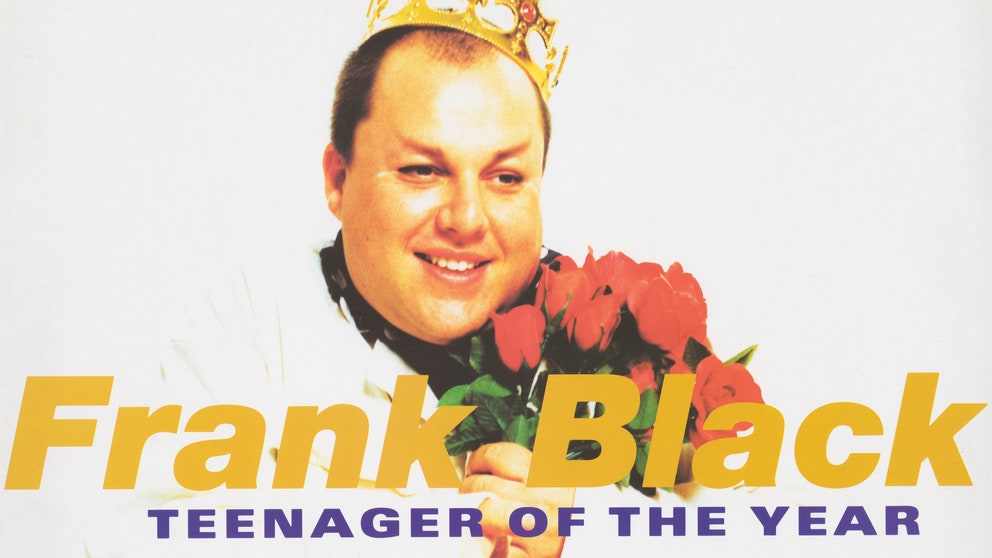“What we need is more silly men,” declares Frank Black on “Two Reelers,” a salute to the Three Stooges that arrives about halfway through Teenager of the Year, the second album the former Black Francis released after disbanding the Pixies in 1993. His celebration of the idiocy of Larry, Curly, and Moe makes for an unusual statement of purpose—a rallying call for alt-rockers to embrace the freedom of being ridiculous.
Silliness was in scarce supply when Black released Teenager of the Year in May of 1994. Three years after Nirvana’s “Smells Like Teen Spirit” shot its way into the Hot 100, the alternative rock explosion of the ’90s had acquired a decidedly dour aura, one cultivated by legions of lumbering grunge bands and tortured industrial outfits. The Pixies’ artful nightmares may have softened the ground for the angst-ridden acts jostling for position on MTV’s 120 Minutes, but Black purposefully separated himself from the pack once he launched his solo career. He didn’t hang with the flannel-clad hipsters; he aligned himself with the defiantly geeky They Might Be Giants, the Brooklyn-based college-rock duo he called his “favorite band” during the promotional push for Teenager of the Year—a cycle that included a jaunt opening for TMBG in the fall of ’94.
The fact that he twice took an opening slot for an established act in ’94—in the spring, he went out with the Ramones—could be seen as evidence of Black’s diminishing status within alt-rock circles, but Teenager of the Year suggests that he took deliberately took himself out of the rat race. Teeming with tales of underwater empires and Los Angeles history lessons, the album exists in its own universe, a testament to Black’s wide and varied cultural obsessions. It’s also an album that could only have been made in the mid-’90s, when the CD boom poured enough cash into the music industry for a cult rocker like Black to ensconce himself in posh L.A. studios and indulge his every whim, resulting in an album as lengthy as a double LP—indeed, the only physical edition of the 30th Anniversary reissue is a gold double-vinyl—but not structured like the carefully sculpted gatefold classics of yore. Instead, its contours feel dictated strictly by the capacity of a compact disc: It sprawls until it suddenly stops, not because it reached its destination but because it ran out of road.
Black scattered sharp, carefully sculpted songs throughout the album. One of them, a buoyant piece of power pop called “Headache,” actually did make headway in the alt-rock mainstream; it spent 11 weeks on Billboard’s Modern Rock charts, a run that was longer than either “Los Angeles” or “Hang Onto Your Ego,” the two singles pulled from his eponymous 1993 solo debut. Those punchy numbers are balanced by excursions into dreamy romanticism (“Speedy Marie,” “I Could Stay Here Forever”), invented Western epics (“Calistan”), and suites shrunken to dioramas (“Freedom Rock,” “Olé Mulholland”). Each of these longer pieces serves as guideposts in a record that offers a series of left turns as it swerves from revved-up rockabilly to smooth lovers rock, with Black only occasionally attempting to mitigate the whiplash change of moods. He’s too wrapped up in following his counterintuitive muse to consider pandering to passive listeners.
